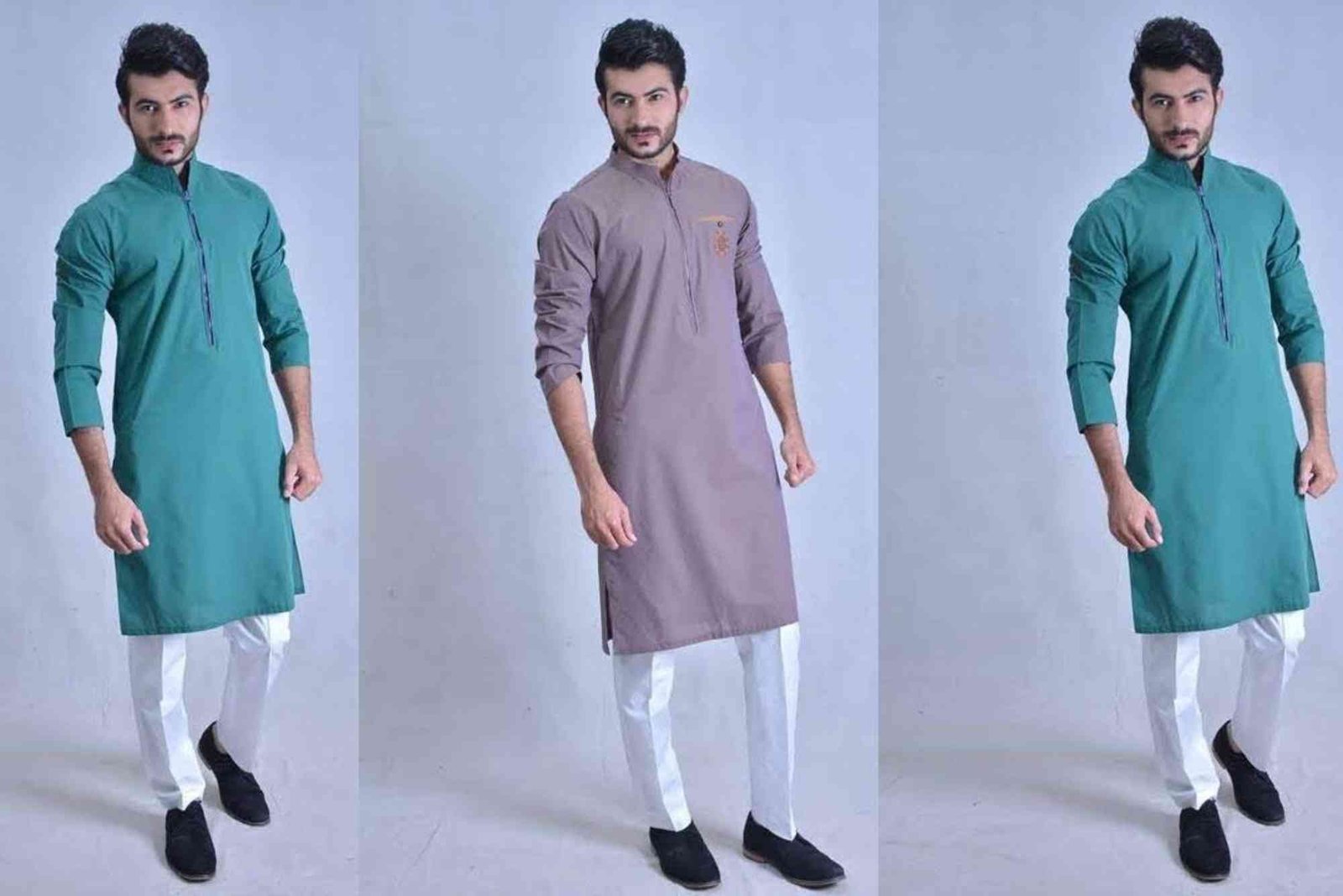How To Make A Kurta Pajama
Creating your own kurta pajama is not only cost-effective but also allows you to customize it for style, comfort, and perfect fit. Whether it’s for a casual outing or a festive occasion, making a kurta pajama can be a fulfilling DIY project. In this guide, we’ll walk you through each step, from selecting the fabric to stitching the final piece.
A kurta pajama is a traditional outfit worn widely in South Asia, comprising a long tunic (kurta) and tapered trousers (pajama). Knowing how to make a kurta pajama gives you freedom over fabric, color, and design. Many people buy ready-made sets, but sewing your own ensures a unique style and ideal fit. This guide is perfect for beginners and those with intermediate sewing skills.
Choosing the Right Fabric
Selecting Fabric for Kurta
The first step in making a kurta pajama is selecting the right fabric. Cotton is ideal for casual wear, while silk or linen is better for formal occasions. Lightweight fabrics allow better comfort in summer, while heavier fabrics are suited for winter.
Pajama Fabric Considerations
Pajamas require stretch and softness for comfort. Fabrics like cotton blends or lightweight linen are ideal. Ensure that the fabric complements the kurta in both texture and color.
Tools Needed
Before starting, gather essential tools: fabric scissors, measuring tape, sewing machine, thread matching the fabric, pins, chalk, and pattern paper. Having everything ready makes the sewing process smoother.
Taking Measurements
Kurta Measurements
Accurate measurements ensure a perfect fit. Measure your chest, shoulders, arm length, waist, and kurta length. Note these down carefully.
Pajama Measurements
Measure your waist, hips, thigh, calf, and ankle circumference. Also, note the desired length from waist to ankle. Proper pajama measurements are key for comfort and style.
Tips for Precision
Always measure over light clothing or use a measuring tape directly on the body. Double-check each measurement to avoid errors.
Creating the Pattern
Kurta Pattern Drafting
Draw the kurta pattern on pattern paper using your measurements. Include seam allowances and ensure symmetry for both sides. You can also modify the neckline, sleeve length, and side slits at this stage.
Pajama Pattern Drafting
For the pajama, create a tapered pattern. Include an elastic or drawstring waistband for adjustability. Ensure the leg width is comfortable for movement.
Using Ready-Made Patterns
If drafting seems challenging, you can buy pre-made kurta pajama patterns from local stores or online. This simplifies the process for beginners.
Cutting the Fabric
Preparing the Fabric
Wash and iron the fabric before cutting. This prevents shrinkage later. Lay the fabric flat on a clean surface.
Cutting Techniques
Pin the patterns to the fabric and cut along the edges carefully. Cut each piece only once to avoid fraying or mismatch.
Handling Fabric Types
Lightweight fabrics require gentle cutting, while thicker fabrics need sharp scissors. Always cut slowly and steadily for precision.
Sewing the Kurta
Stitching the Front and Back
Start by sewing the shoulder seams, then attach the side panels. Ensure that edges align perfectly to avoid uneven seams.
Attaching Sleeves
Pin the sleeves to the armholes, matching the curves. Sew carefully for a smooth finish.
Adding Neckline and Hem
Choose a simple round, V-neck, or collared neckline. Sew the neckline facing or add piping for a professional look. Finish the hem with a clean stitch.
Finishing Touches
Iron the kurta after sewing. Add decorative buttons, embroidery, or piping if desired. This elevates the overall appearance.
Sewing the Pajama
Waistband and Elastic
Fold the waistband, insert elastic, and secure it. Learn more Alternatively, you can use a drawstring for adjustable comfort.
Stitching the Legs
Sew the inner and outer leg seams carefully. Make sure both legs are symmetrical.
Hemming the Ankles
Finish the ankle hems with a clean stitch. You can taper them slightly for a modern look.
Final Fitting
Try on the pajama and adjust as needed. Related Beauty & Fashion article Minor adjustments can make a huge difference in comfort and appearance.
Styling Tips
Matching Colors and Patterns
Coordinate kurta and pajama colors. Lighter kurta with darker pajama creates contrast, while matching shades create a traditional look.
Accessories and Footwear
Pair your kurta pajama with traditional footwear like mojaris or sandals. Adding a waistcoat or dupatta can enhance the festive look.
Fabric Maintenance
Wash delicate fabrics gently. Iron at appropriate temperatures to maintain longevity and crispness.
FAQ
What fabric is best for making a kurta pajama?
Cotton is ideal for casual wear, while silk, linen, or blends are suitable for formal occasions.
Can I make a kurta pajama without a sewing machine?
Yes, hand stitching is possible, but a sewing machine ensures faster and more durable results.
How long does it take to make a kurta pajama?
For beginners, it may take 6–8 hours. Experienced sewers can finish within 3–4 hours.
Can I customize the kurta neckline and sleeve length?
Absolutely. Customization is one of the main benefits of making your own kurta pajama.
Where can I find kurta pajama patterns?
Patterns are available online or in fabric stores. You can also draft your own using measurements.
Making a kurta pajama is a rewarding process that combines tradition with personal style. From choosing the right fabric to final fittings, every step adds to the satisfaction of wearing something you created. By following this guide, you can confidently craft a kurta pajama that fits perfectly and looks stylish.







